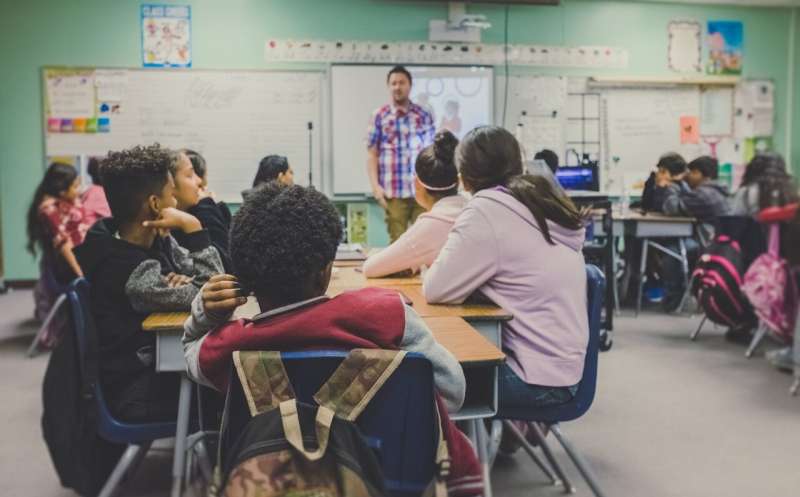This article has been reviewed according to Science X's editorial process and policies. Editors have highlighted the following attributes while ensuring the content's credibility:
fact-checked
trusted source
proofread
Support, education can help teachers with post-pandemic burnout

Teaching is already considered among the most stressful professions in the United States. Now in a new study, Case Western Reserve University researchers have found that educators experienced "exacerbated" job-related stress in the wake of the COVID-19 pandemic, leaving the entire profession vulnerable to burnout and indirect trauma.
But with a model called CoHealing, on-the-job stress can be mitigated, according to researchers at the Center on Trauma and Adversity at CWRU's Jack, Joseph and Morton Mandel School of Applied Social Sciences.
The idea of CoHealing is simple: With support and psychoeducation (information about mental health), teachers—along with other helping professionals—can ease their symptoms from burnout, stress and what is known as secondary traumatic stress disorder. It's a mental-health condition from working with people who've experienced trauma—similar to post-traumatic stress disorder.
For the study, researchers surveyed 121 participants—a mix of mostly educators and health care workers—experiencing stress and burnout. Each participant was sent eight electronic surveys over a one-year period during their participation in the monthly CoHealing sessions. The results were recently published in the OBM Integrative and Complementary Medicine journal.
They found that trauma is a big concern in schools.
"The impact of the pandemic on teachers and education staff has highlighted the need for greater mental-health support and resources to help them cope with these challenges," said Jennifer King, the lead researcher and an assistant professor and co-director of the Trauma Center.
"When we're talking about stress and burnout—which generally involve interventions that occur outside of organizations—we know that getting more sleep or taking yoga classes can help, but solutions that work involve bringing people together to share resources and learn new stress-management strategies they can implement through the workday," she said. "We want teachers to find joy in their work, but when they're feeling burnt out, that's just not happening anymore."
The researchers noted that stress on the job can negatively affect educators' physical health—think immune function suppression, high blood-pressure and increased heart rate. Poor teacher wellness and mental health, King said, are linked to lower-quality student learning environments and poorer academic and nonacademic student outcomes.
"We found that (CoHealing) shows promise in preventing secondary trauma and reducing existing secondary trauma symptoms," King said, "and teachers, health care providers and other folks bearing witness to others' traumatic stress can benefit from it."
More information: Jennifer King et al, Introducing a Novel Intervention, CoHealing, to Address Teacher Burnout and Indirect Trauma, OBM Integrative and Complementary Medicine (2023). DOI: 10.21926/obm.icm.2303036

















